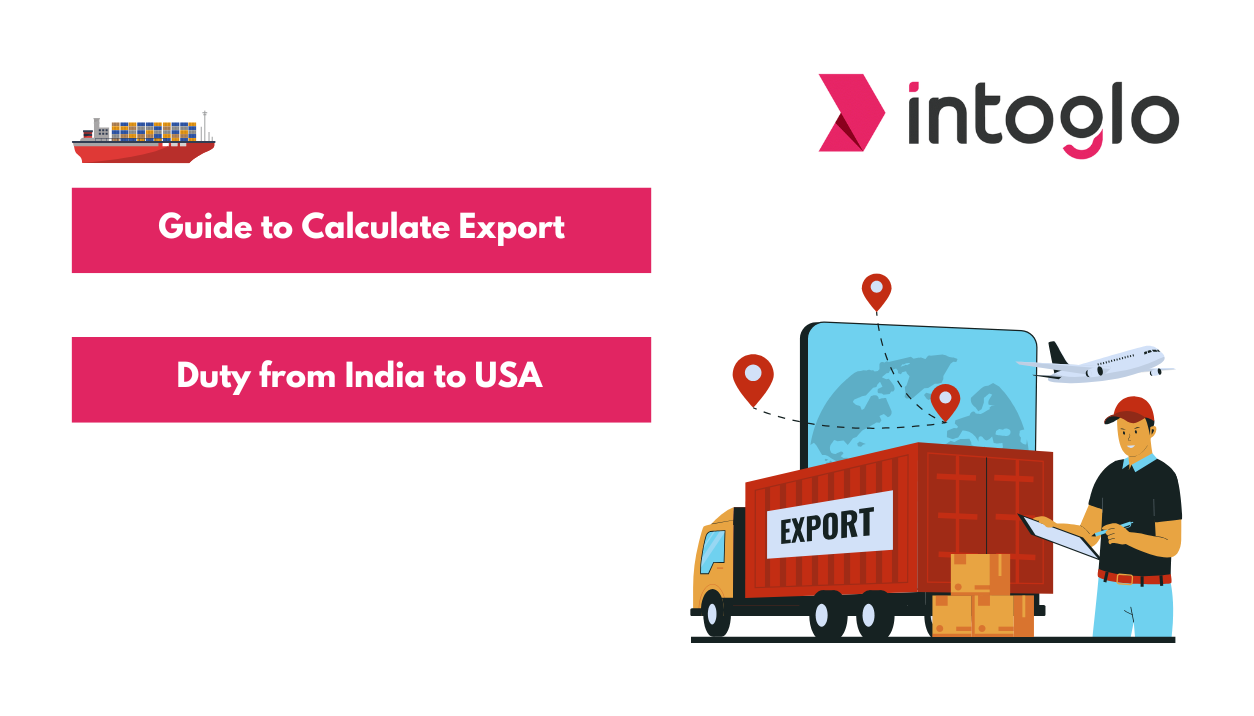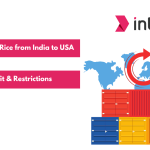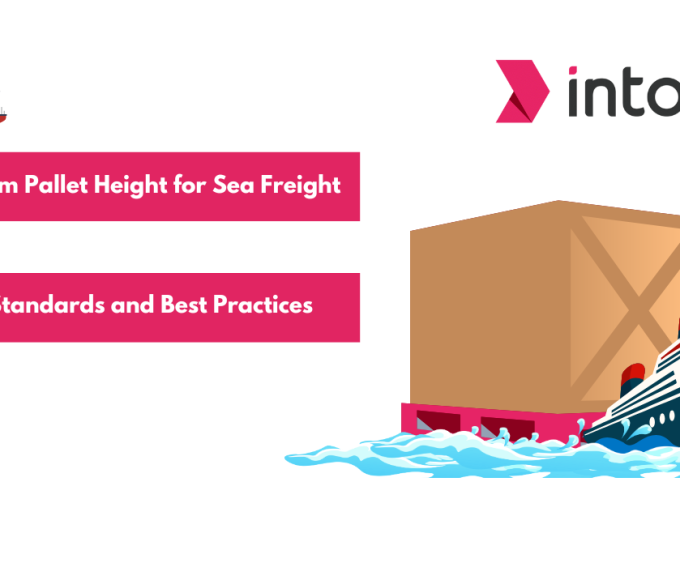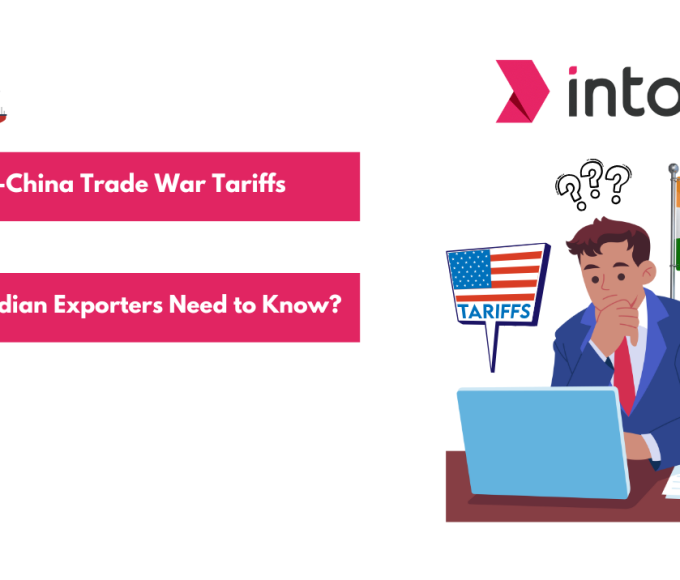Exporting from India to the U.S. in 2025 means dealing with new tariff challenges and shifting trade policies. In April 2025, India’s exports to the U.S. surged 27% year-on-year to $8.5 billion, as exporters rushed to ship goods ahead of a 26% U.S. tariff announced on April 2, though this tariff was later suspended for 90 days. Overall, India’s merchandise exports grew 9% year-on-year to $38.5 billion in April, driven by strong demand for electronics and engineering goods.
Key sectors like, seafood, and gold are expected to see the steepest drops, with electronics alone projected to fall by 12%. Understanding how to accurately calculate export duty from India to the USA is now crucial for Indian exporters aiming to stay competitive in the evolving U.S. market
By following this guide, exporters can make informed decisions, minimize unexpected costs, and confidently navigate the complexities of international trade.
Types of Export Duties
To calculate export duty from India to the USA, it’s essential to understand the different types of duties applied to goods. Export duties vary based on the item’s value, quantity, or mix. Here’s a breakdown of the main types of export duties and how each one affects your costs.
1. Ad Valorem Duty
- This duty type is based on the value of the goods you’re exporting. The duty is calculated as a percentage of the item’s total market value.
- Why it’s used: Ad valorem duty adapts to market changes, making it fairer for products with fluctuating prices. For example, if the value of an exported luxury item rises, the duty also increases proportionally.
2. Specific Duty
- With specific duty, a fixed amount is charged per unit of quantity, such as per kilogram, liter, or piece, regardless of the item’s value.
- Why it’s used: Specific duties are straightforward to calculate and provide predictable costs. They’re commonly applied to standardized goods with little value fluctuation, such as certain agricultural products or raw materials.
3. Compound Duty
- Compound duty combines elements of both ad valorem and specific duties, so you pay a mix of a percentage of the item’s value and a fixed rate per unit.
- Why it’s used: Compound duty offers a balanced approach, accounting for the goods’ value and quantity. This can be especially useful for semi-luxury items or goods with variable prices where the value and the number of units impact overall costs.
How to Calculate Different Export Duties from India to the USA?
When exporting goods from India to the USA, understanding the different types of duties and taxes that apply is essential. Each duty is assigned a specific HS (Harmonized System) code, which determines the tariff rate for a particular product. To calculate the export duty accurately, you must first identify the correct HS code for your product.
You can easily find the relevant codes and calculate the duties using Intoglo’s HS Code Lookup and Finder, a useful tool for getting precise and up-to-date tariff information.
How to Calculate Different Export Duties from India to the USA
When exporting goods from India to the USA, it’s essential to understand how different export duties are calculated to avoid unexpected costs and compliance issues.
Ad Valorem Duty (Calculated as a percentage of the product’s value)
Step 1:
Identify your product’s exact HS Code.
You can find your HS code using Intoglo’s HS Code Lookup and Finder, or you can ask your shipping agent or freight forwarder for the code.
Example:
HS Code for your product is 6403.59.90 (Footwear category).
Step 2:
Check the duty rate (%) for this HS Code under the U.S. HTSUS (Harmonized Tariff Schedule of the United States).
You can use the HTSUS Search or Intoglo’s scanner tool to find this.
Example:
Duty rate is 5%.
Step 3:
Determine the Customs Value of the product (this is typically the price you paid for the product, including freight and insurance).
For example, if you paid $100 for the product, the Customs Value is $100.
Step 4:
Calculate the Ad Valorem Duty using the formula:
Ad Valorem Duty = Customs Value × Duty Rate
For this example:
Ad Valorem Duty = $100 × 5% = $5
Step 5:
The duty payable on the product is $5, in addition to any other fees or charges.
Specific Duty (Calculated per unit of measurement, such as weight or quantity)
Step 1:
Identify your product’s exact HS Code.
Use Intoglo’s HS Code Lookup and Finder or get it from your freight forwarder.
Example:
HS Code for your product is 1704.90.00 (Sugar).
Step 2:
Check the duty rate (specific duty) for this HS Code under the U.S. HTSUS.
Use HTSUS Search or Intoglo’s tool.
Example:
Duty rate is $0.02 per kilogram.
Step 3:
Determine the quantity of your product.
For example, if you are exporting 200 kg of sugar, then the quantity is 200 kg.
Step 4:
Calculate the Specific Duty using the formula:
Specific Duty = Quantity × Duty Rate
For this example:
Specific Duty = 200 kg × $0.02 = $4
Step 5:
The duty payable on this shipment is $4, in addition to other applicable charges.
Compound Duty (Combination of Ad Valorem and Specific Duties)
Step 1:
Identify your product’s exact HS Code.
Use HS Code Lookup and Finder or ask your freight forwarder.
Example:
HS Code for your product is 1006.30.00 (Rice).
Step 2:
Check the duty rate for both Ad Valorem and Specific duties under the U.S. HTSUS.
Use the HTSUS Search or Intoglo’s scanner tool.
Example:
Ad Valorem Duty rate is 10% and Specific Duty is $0.03 per kilogram.
Step 3:
Determine the customs value (for Ad Valorem duty) and the quantity (for Specific duty).
For example, the customs value is $200 (the value of 100 kg of rice), and the quantity is 100 kg.
Step 4:
Calculate the Ad Valorem Duty using the formula:
Ad Valorem Duty = Customs Value × Duty Rate
For this example:
Ad Valorem Duty = $200 × 10% = $20.
Step 5:
Calculate the Specific Duty using the formula:
Specific Duty = Quantity × Duty Rate
For this example:
Specific Duty = 100 kg × $0.03 = $3.
Step 6:
Add both duties together to get the Compound Duty.
Compound Duty = Ad Valorem Duty + Specific Duty
For this example:
Compound Duty = $20 + $3 = $23.
Step 7:
The total duty payable on the shipment is $23, in addition to any other applicable charges.
These steps provide a clear, easy-to-follow guide for calculating Ad Valorem, Specific, and Compound Duties when exporting goods from India to the USA. Make sure to consult the HS Code Lookup and Finder for the most accurate and up-to-date tariff details.
Intoglo is a comprehensive, door-to-door logistics provider specializing in cross-border shipping from India to the USA. We help exporters navigate export duties with an HS code scanner. For accurate tariffs and US-specific HS codes, try Intoglo’s HS Code Scanner—an AI-powered tool that identifies the precise 10-digit H.S. code and tariff details with just an image upload.
Factors Influencing Duty Determination
Several key factors influence export duty rates in India, impacting businesses across different industries. Understanding these factors is essential for businesses to estimate costs, adapt strategies, and remain competitive. Here’s a brief look:
- Product Type: Essential goods, luxury items, and raw materials often have higher duties to protect domestic supply or add value locally.
- Market Value: High-value items may attract higher duties to stabilize markets, especially when prices fluctuate.
- Supply and Demand: Duties are adjusted based on domestic needs, higher during shortages to secure local supply and lower for surplus goods to boost exports.
- Government Policy Goals: Duties help control inflation, support domestic industries, and generate revenue.
- Trade Agreements: Preferential or free trade agreements can lower duties on specific exports, making them more competitive in partner countries.
- Resource and Environmental Goals: Duties may limit exports of scarce or environmentally sensitive resources.
- Global Conditions: High global demand, trade disputes, and currency changes can influence duty adjustments to balance economic impacts.
Products Subject to Export Duties and Recent Policy Shifts
Several Indian export sectors are now subject to higher duties due to recent policy changes. Gold and diamond products are projected to drop by 15.3%, while fish and crustaceans could fall by 20.2%. Iron and steel articles, vehicles and parts, plastics, carpets, petroleum products, and machinery are also facing significant duty-related challenges.
Exemptions and Resilient Sectors
Pharmaceuticals, semiconductors, and certain energy products remain exempt from these new U.S. tariffs, helping India maintain a competitive edge in these areas. Textiles and apparel, ceramic items, and inorganic chemicals are also expected to perform relatively well, despite the broader export duty hikes.
Recent Policy Shifts
India’s Directorate General of Foreign Trade (DGFT) updated the export policy in January 2025, introducing detailed conditions for each product using the standardized 8-digit ITC-HS code system. This shift from a description-based approach to a globally recognized coding system aims to streamline export classification and compliance, making it easier for exporters to understand and meet their obligations.
Sector-Specific Duty Changes
- Electronics: Mobile phones, PCBA, and chargers face a 15% duty; flat panel displays, 20%.
- Precious Metals: Gold and silver, 6%; platinum, 6.4%.
- Leather and Textiles: Raw hides and skins, 30–40%; tanned leather, nil; finished leather, nil.
- Medical Devices: Many life-saving drugs and equipment remain exempt or at reduced rates.
These policy shifts and duty adjustments reflect India’s response to changing global trade dynamics and the need to align with international standards, while also protecting key domestic industries.
Easily identify the right US-specific HS codes and tariffs to streamline your exports with Intoglo’s AI-powered HS Code Scanner.
Get instant, detailed descriptions and tariffs to streamline your export process.
Impact of Export Duties on Businesses
Export duties significantly influence business operations, particularly in pricing strategies and competitive positioning. Here’s an analysis of their effects:
1. Effect on Pricing and Competition
- Increased Costs: Export duties raise the cost of goods sold internationally, leading businesses to either absorb these costs, reducing profit margins or pass them on to consumers, potentially decreasing demand.
- Competitive Disadvantage: Higher export duties can make products less competitive in global markets than countries with lower or no such responsibilities. This disadvantage may result in reduced market share and hinder expansion efforts.
- Market Dynamics: Export duties can alter global supply chains. For instance, in 2023, India imposed a 20% duty on parboiled rice exports, which affected global rice prices and trade flows.
2. Case Study: Onion Exports in India
Background: India is one of the largest producers and exporters of onions globally. However, due to price volatility and concerns about domestic supply, the Indian government has often imposed export duties on onions or set minimum export prices.
Impact of Policy Shifts:
- In May 2024, the Indian government lifted the ban on onion exports and imposed a minimum export price (MEP) of $550 per metric ton and a 40% export duty. This decision aimed to balance domestic supply and stabilize prices.
- Subsequently, in October 2023, the government notified an increased MEP of $800 per metric ton for onion exports, effective from October 29, 2023, to December 31, 2023. This measure was taken to maintain the affordable availability of onions for domestic consumers.
Business Implications: Imposing a 40% export duty and a high minimum export price on onions in India impacts businesses by reducing global competitiveness. Exporters face lower demand as Indian onions become pricier internationally, potentially leading to decreased export volumes. This policy shift aims to stabilize domestic supply but affects revenue for exporters and income predictability for farmers relying on international markets.
This example highlights how export duties on staple commodities like onions can create ripple effects, affecting not just pricing but also income stability for farmers and competitiveness in the global agricultural market.
Also Read: Top In-Demand Indian Products Exported to the USA
Export Duty Exemptions and Incentives
Export duty exemptions and incentives in India help businesses boost competitiveness and expand in global markets. Here’s an overview:
Government Incentives to Promote Exports
- Export Promotion Schemes: Programs like the Merchandise Exports from India Scheme (MEIS) and the Remission of Duties and Taxes on Exported Products (RoDTEP) offer financial incentives or tax remissions, reducing export-related costs.
- Special Economic Zones (SEZs): Exports from SEZs are often exempt from duties, providing benefits like tax holidays and exemptions on import duties for raw materials.
- Export-Oriented Units (EOUs): These units receive duty-free import of capital goods, raw materials, and other inputs, encouraging businesses to export a substantial portion of their production.
Process for Applying for Duty Exemptions
- Eligibility Verification: Businesses must confirm eligibility for specific schemes, often based on product type, export volume, or location (like SEZs).
- Application through DGFT: Exporters apply for duty exemptions or incentives through the Directorate General of Foreign Trade (DGFT), submitting required documents like export licenses, proof of goods exported, and invoices.
- Customs Clearance and Certification: Customs authorities verify documents, inspect shipments, and issue certifications to finalize exemptions or refunds.
These incentives and exemptions simplify export costs, making Indian products more competitive globally.
Also Read: What is Duty Drawback: Process, Types, and Example
Tips for Efficient Duty Management
Efficient duty management is key for exporters to minimize costs and maintain compliance. Here are a few practical tips:
- Stay Updated on Policy Changes: Regularly review government updates on export duties, exemptions, and incentives. Duty rates and policies can shift frequently, especially for high-demand or essential goods. Being proactive helps you anticipate and adjust to new costs.
- Leverage Export Incentive Programs: Use available government schemes like SEZs, MEIS, and RoDTEP, which offer duty refunds or exemptions. Ensure eligibility and apply through the proper channels to reduce overall duty costs.
- Use Trade Agreements Strategically: Identify preferential trade agreements (PTAs) or free trade agreements (FTAs) that India has with other countries. These agreements often lower or eliminate duties, allowing you to export to partner countries at a competitive rate.
- Maintain Accurate Documentation: Keep all necessary documents organized, including invoices, export licenses, and proof of goods exported. Clear and accurate documentation is essential to claim exemptions, duty refunds, or participate in government incentive programs.
- Optimize Supply Chain and Logistics: Streamline logistics to reduce costs and improve duty management. For instance, consolidating shipments or choosing optimal export routes can help minimize duty costs and avoid unnecessary delays.
By following these tips, exporters can better manage export duties, stay compliant, and maximize savings in a dynamic trade environment.
Conclusion
Understanding export duties is essential for businesses exporting from India to the USA. They directly impact pricing, compliance, and overall profitability. Staying informed about the latest duty rates and policy changes helps exporters make smarter decisions and adapt to the evolving regulatory dynamics. With the right knowledge and strategic planning, exporters can optimize their processes, reduce costs, and maintain a competitive edge.
For businesses seeking a reliable logistics partner, Intoglo provides a comprehensive solution for seamless, door-to-door cross-border shipping from India to the USA, including:
- Direct Collaboration: Works directly with shipping lines, truckers, and customs brokers to avoid delays and hidden charges.
- Extensive U.S. Warehouse Network: Access over 50 warehouses across key U.S. locations.
- End-to-End Shipment Visibility: Track every step with Glotrack, Intoglo’s tracking module.
- Instant Rate Quotes: Get immediate rates for full container loads.
- U.S. Time Zone Support: Dedicated support team in the USA for smooth communication.









Leave a comment